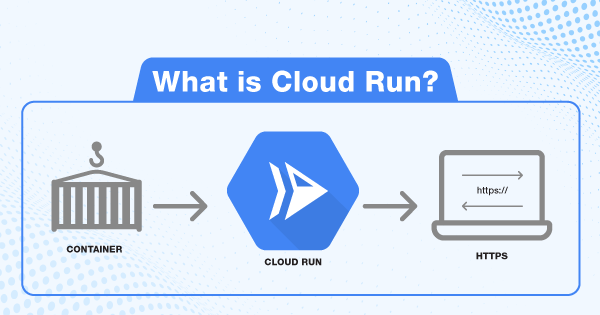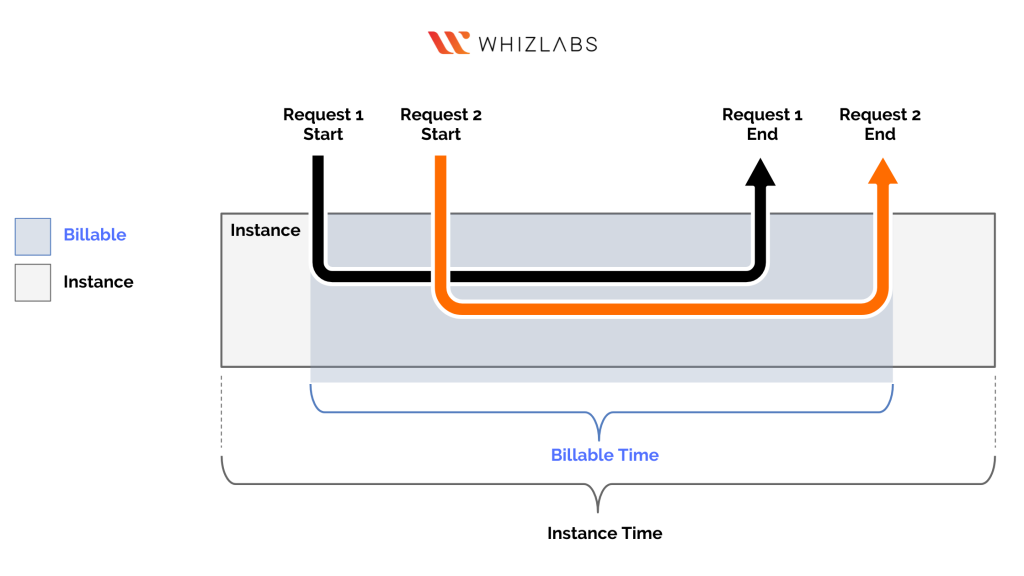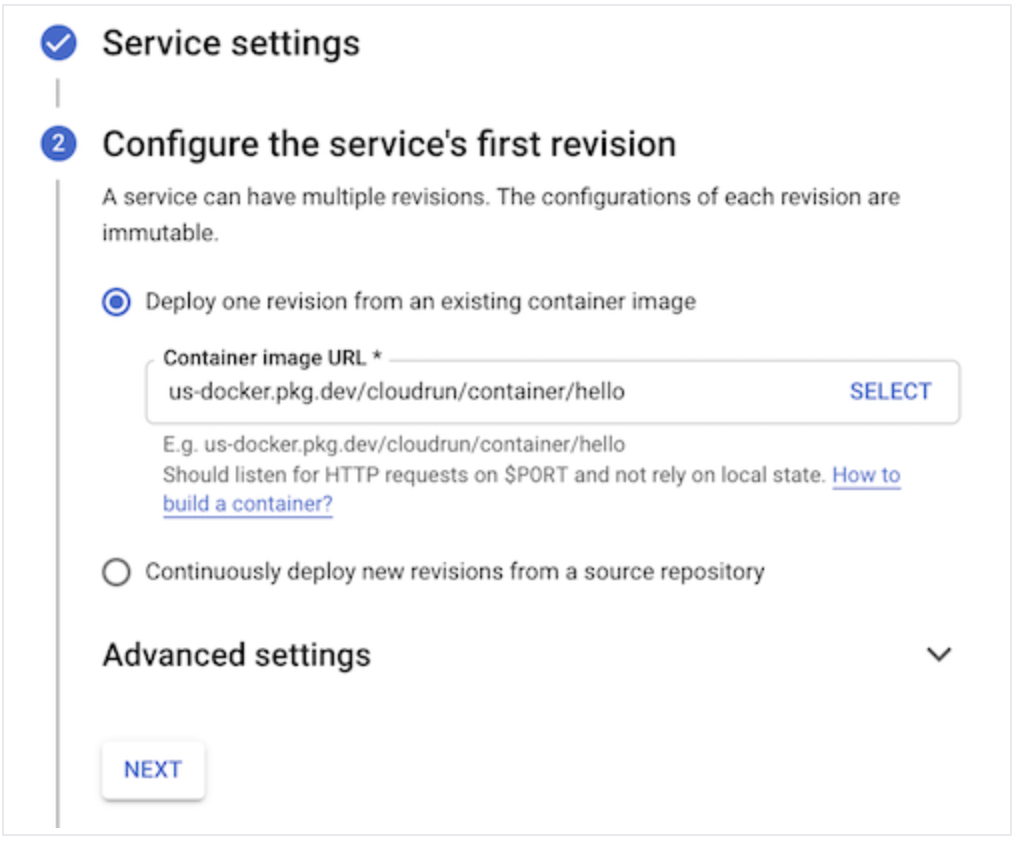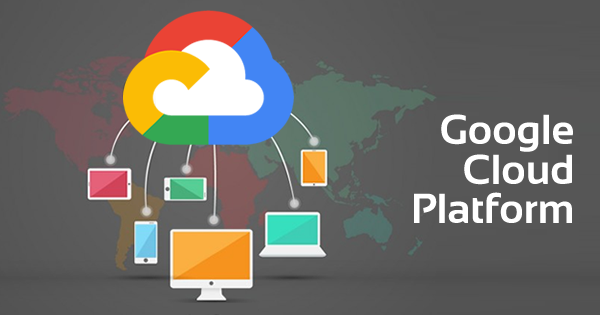Cloud Run is a managed computing platform that intends to help you run the containers that are usually invoked with events or requests. It operates over a serverless architecture to assist you with all of the infrastructure management potentials. With Cloud Run, you will get sufficient time to focus on core business implementations, such as building apps, software, and others, while the Google service will look after management aspects.
How Cloud Run fits in your learning path as a core topic? |
||
| Certification Name | Cloud Run | Coverage in Certification Exam |
| Cloud Digital Leader | YES | Medium to Advanced Knowledge |
| Cloud Engineer | YES | Medium to Advanced Knowledge |
| Cloud DevOps Engineer | NO | Skip this topic |
| Cloud Security Engineer | NO | Skip this topic |
| Cloud Network Engineer | NO | Skip this topic |
| Collaboration Engineer Machine Learning Engineer | YES | Medium to Advanced Knowledge |
Cloud Run intends to develop and deploy scalable containerized apps over a serverless platform. It allows you to write the codes with the use of your selected language. You can use Ruby, Node.js, Java, Python, Go, or other such languages for writing out your codes. Cloud Run is built over the Knative open standards that make it possible for you to implement portability upon the apps.
So, if you intend to implement Cloud Run for your infrastructure management prospects, you should master its detailed attributes, concepts, and implementation tactics. Follow this article till the end to know everything about Cloud Run.
Overview of Google Cloud Run
Managing the infrastructure management with Cloud Run will lead you to automate most of the processes with a simple developer’s experience. A person or the developer has to point out their containers to Cloud Run and then go ahead and click on the ‘Create’ tab. Soon after the developers integrate that, Cloud Run takes up that container with the pre-built app to deploy it over a serverless environment. Hence, this eliminates the necessity of managing the resources or creating an infrastructure for the IT team of an organization. Moreover, it allows the DevOps teams to stay within the code.
Planning to take Google Cloud Certifications? Check out Whizlabs brand new online courses and practice tests here!
But with such efficacies, there are certain considerations within the working of Cloud Run that you must know. The logic that is embedded within the containers should be stateless. Along with that, one should specify the combination of CPU vs. memory resources, along with all of the concurrencies. One must attach a persistent volume to the container while it is running, preventing the deletion of any data stored within it. Cloud Run has the potential to add/remove the servers to fulfill the demands of users. It offers useful information about the container, HTTP endpoint, and billing control over the container to the users.
The monitoring of the usage aspects associated with Cloud Run is carried out with GUI metrics. Apart from that, the users can also make use of the container logs for enhanced monitoring aspects. With Cloud Run, there is a versioning feature that makes it possible for the user to access the previous container version through the existing one.
There is a specific requirement for the containers listed under the container runtime contract. These requirements specify the eligibility of a container to be added onto the Cloud Run operations. The requirements include:
- Containers should be compiled for 64-bit Linux.
- Containers should have the ability to listen for all of the HTTP requests over port 8080.
- The containers should be able to fit within a memory scale of 2GB.
- The start of any container instance must be from an HTTP server within the next 4 minutes of receiving a request.
- The applications built within your organizations should be eligible for working as containers. And they should also be auto-scaled from the range of ZERO to any multiple running instances.
All of your Cloud Run projects should adhere to the general requirements, as per the container runtime contract. It will enable you to run all types of applications over Cloud Run, irrespective of the programming language used for writing the codes. All of the requirements are subject to change, so keep yourself updated with the contract, to meet the requirements of running a Cloud Run project.
Google Cloud Certified Associate Cloud Engineer certification is now easy with Whizlabs. Check out our free test, practice tests and online course here!
The developers who are already proficient with the use of Docker and traditional PaaS solutions, such as Heroku, will find it quite easy to jam up with Google Cloud Run. You just need to enable the Cloud Run API, onto your Google Cloud account, by visiting this link. Soon after that, you need to install the Google Cloud SDK and then go ahead with installing all of the essential components, or you can update them in case you already have all of those components.
Cloud Run Pricing
Google Cloud Run charges you just for the resources that you intend to use. And the charges are also specific to a round-off figure of around 100 milliseconds. You need to keep a note that each of the resources you use consists of a free tier, beyond which you are liable to pay the charge! If you are limiting your usage of resources within the free tier, then you don’t have to pay anything to Google!
The Google Cloud Run bill that you will receive will reflect the sum of used resources over the pricing table. There are three tiers of pricing for Google Cloud Run, that involves free tier, 1st tier, and 2nd tier. There is a dedicated pricing structure based upon CPU, memory, requests, and networking. To know the details associated with Google Cloud Run pricing, visit the hyperlinked documentation by Google. The billable time for Google Cloud Run is when the container instance starts, it is shut down with a handling initiative for SIGTERM signal, or when a request processes over a container instance.
Use Cases of Google Cloud Run
Cloud Run is considered the best service for businesses that are seeking new container deployment strategies with the use of serverless architecture. The developers or businesses that are not using containers won’t understand the proficiency of Google Cloud Run. But, if all of your projects are based upon Google Cloud, then you will eventually understand and implement the efficacy of Cloud Run.
To help you understand the concepts better, here are some of the use cases of Google Cloud Run that will explain its efficacy and potential of handling container-oriented projects for developers. The use cases include:
1. Back Office Administrations
The back-office administration uses demand spreadsheets and documents. Apart from that, it also demands the running of a web application that is supplied by vendors or organizations. Therefore, with the use of Cloud Run, the developers can host web applications that are containerized. Hence, it will ensure that the web applications are ready for use, and the users will be charged only upon the use of that application.
2. Processing of Data
The developers or users can integrate Cloud Run for certain data processing applications. It helps in transforming any form of lightweight data into structured data and stores it! All of these transformations are triggered within the Google Cloud service aspects. Therefore, when someone creates a .csv file, an event gets triggered, and the file is then delivered to the Cloud Run service. Soon after that, data is then extracted from the file and is then structured & stored over the BigQuery table.
3. Automated Document Generation on Schedule
With the use of Cloud Run services, one can schedule monthly documents with the help of Cloud Scheduler, such as for generating invoices. The containers that consist of custom binaries are eligible to be deployed onto the Cloud Run service. Hence, it has the proficiency to run and implement over any PDF generation tool, with the use of serverless architecture. Therefore, the users are only charged for the number of documents that they generate!
Apart from these major use cases, there are some subtle and commonly preferred use cases of Cloud Run as well. They include:
- The developers or users who intend to target container orchestration or containers as their preferred platform of operation are preferably using the serverless technology of Cloud Run to give rise to productive infrastructure management.
- Cloud Run can help the users integrate continuous deployment and ensure better visibility and control over the containers.
- Cloud Run is suitable for apps that demand the use of HTTP servers as an integral part of their entire architecture. It is used on priority because Cloud Run imposes ideal testing simplicity!
Steps for Deploying Sample Container to Google Cloud Run
As you have mastered the efficacy of Google Cloud Run, it is important for you to understand the process of deploying a sample container onto the Cloud Run instance. The steps include:
- First, you need to navigate the Google Cloud Console and enter your credentials to log into the platform.
- Now, go to the navigation menu, and look for Cloud Run. Click on it!
- Now, you need to click on ‘Create a Service.’ Cloud Run will immediately enable itself when you click on this option.
- Enter the asked details such as service name, deployment platform, and region. After that, you can click upon ‘Next.’
- You need to select the tab that says, “Deploy one revision from an existing container image.” Use the example URL below to understand the process of deploying a sample container. And then, click on ‘Next.’
Source :https://cloud.google.com/run/docs/quickstarts/prebuilt-deploy - Now, you will enter the configuration phase, and you need to select the option, “Allow all traffic” option, and “Allow unauthenticated invocations” in their respective fields. Now, you can ‘Create’ for deploying that image onto the Cloud Run and wait for the completion of the deployment. 7.
- Wait for some time until the deployment is completed.
- In order to check the deployment status, you need to copy the URL generated within the details page of Cloud Run.
- Now, you need to open the URL in the new tab, and you will get to see that you have deployed the container image successfully onto the Cloud Run instance.
Cloud Run For Directing Container to Production in a Matter of Seconds
You get the flexibility to write the code in your respective ways by deploying any of the containers or code that responds to the events or requests. You can go ahead and build certain applications upon your feasible language, with ideal tools and dependencies, to use them and deploy the containers into production in just a matter of seconds.
The Cloud Run aspects intend to handle the infrastructure management features for automatic scaling, up and down. Cloud Run makes the development aspects simple and fast and is integrated with Cloud Code, Cloud Monitoring, Cloud Logging, and Cloud Build. It is to ensure that the end-to-end developer’s experience is enhanced on a large scale!
Cloud Run allows you to leverage the potential of container workflows by packaging the deploying the codes and its associated dependencies. Cloud Run intends to pair perfectly with the entire container ecosystem, including Cloud Code, Artifact Registry, Docket, and Cloud Build. Some of the features of Cloud Run include:
- Redundancy aspects allow Cloud Run services to replicate themselves across diverse zones.
- The container instances that run within Cloud Run are within a secure sandbox that is kept isolated from all of the other resources, with designated permissions and identities. You can also bring your own encryption keys for enhanced security!
- Cloud Run allows you to integrate with Cloud Logging, Cloud Monitoring, Error Reporting, and Cloud Trace. It is to ensure that the application health is stabilized as per the expectations.
- Cloud Run services can be publicly exposed to receive dedicated web requests.
- You can also set up triggers for receiving the events from over 60 Google Cloud sources via the Audit logs or other custom sources.
Bottom Line
The Google Cloud ecosystem comprises over 100s of cloud-oriented services that are imposed upon AI, computing, storage, security, data analysis, and others. Cloud Run is one of the most proficient services that can take development scales to the next level. The developers, with the use of Cloud Run, can integrate with Kubernetes Engine to possess better control over other Cloud services such as Build, Code, or microservices.
Google Cloud Run also streamlines the process of error reporting and cloud reporting aspects. Cloud Run has a more proficient implementation pathway upon integrating it for organizational utilization. So, leverage the concepts of Cloud Run, and implement it upon the desired use case, as per your infrastructure management needs.
[qsm quiz=3]
- Cloud DNS – A Complete Guide - December 15, 2021
- Google Compute Engine: Features and Advantages - December 14, 2021
- What is Cloud Run? - December 13, 2021
- What is Cloud Load Balancing? A Complete Guide - December 9, 2021
- What is a BigTable? - December 8, 2021
- Docker Image creation – Everything You Should Know! - November 25, 2021
- What is BigQuery? - November 19, 2021
- Docker Architecture in Detail - October 6, 2021




